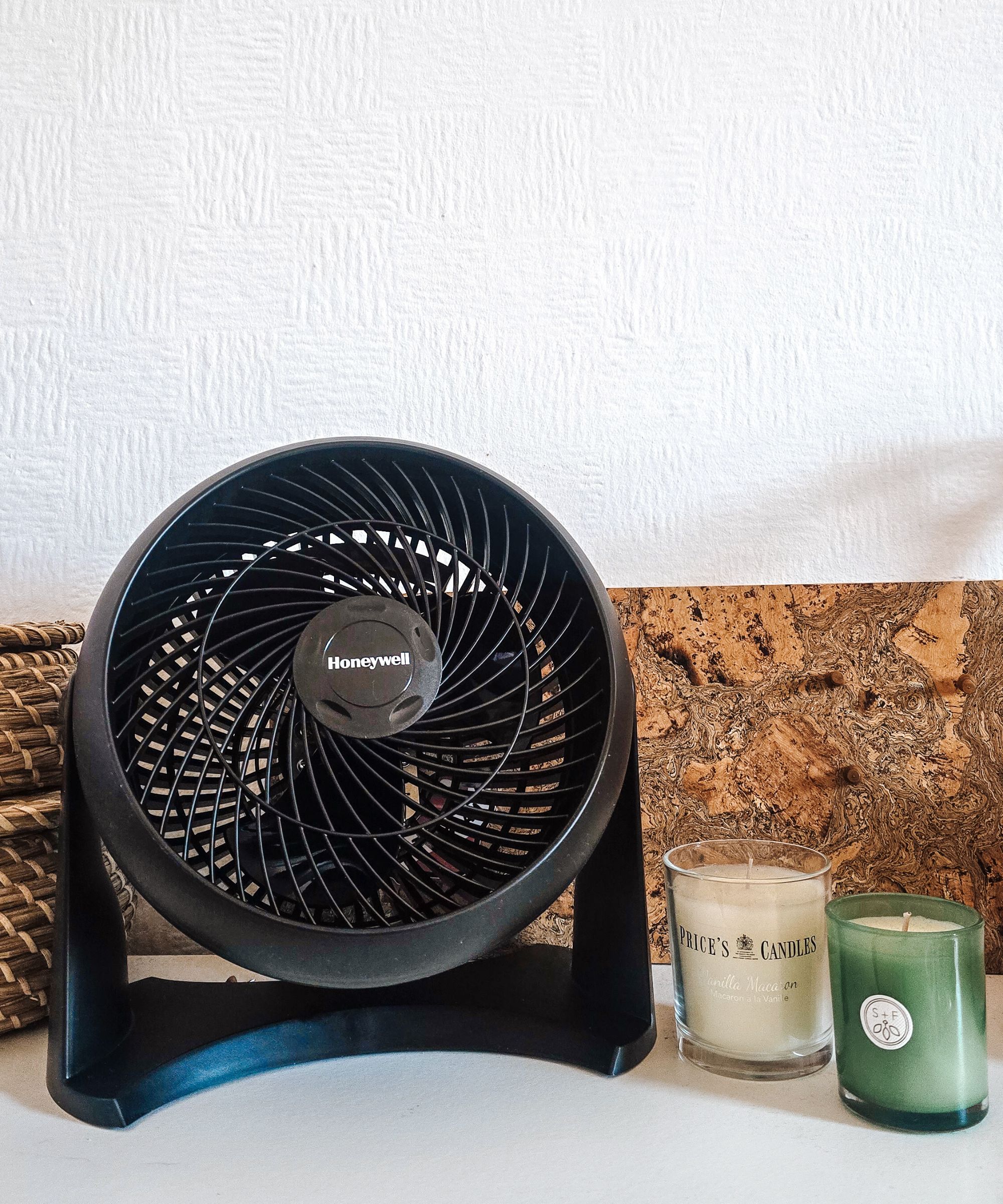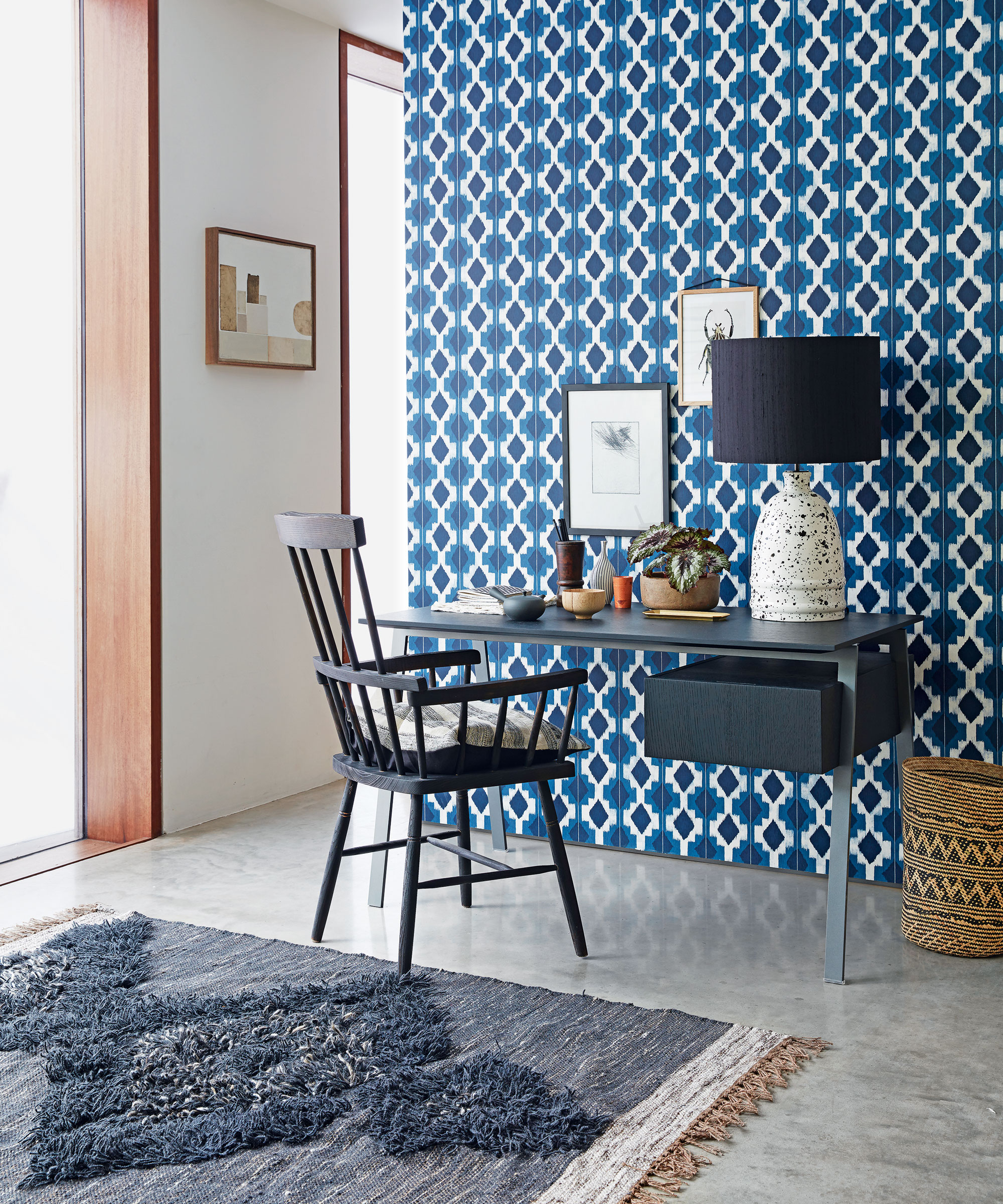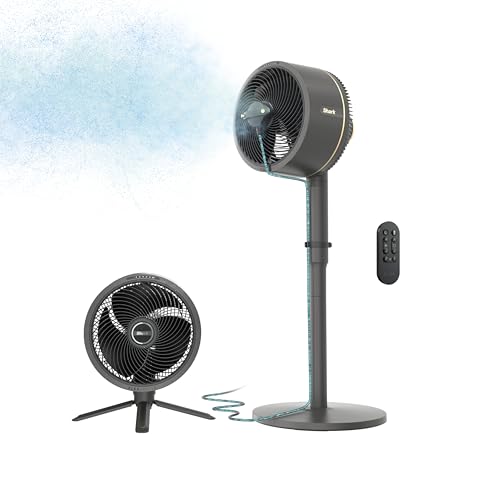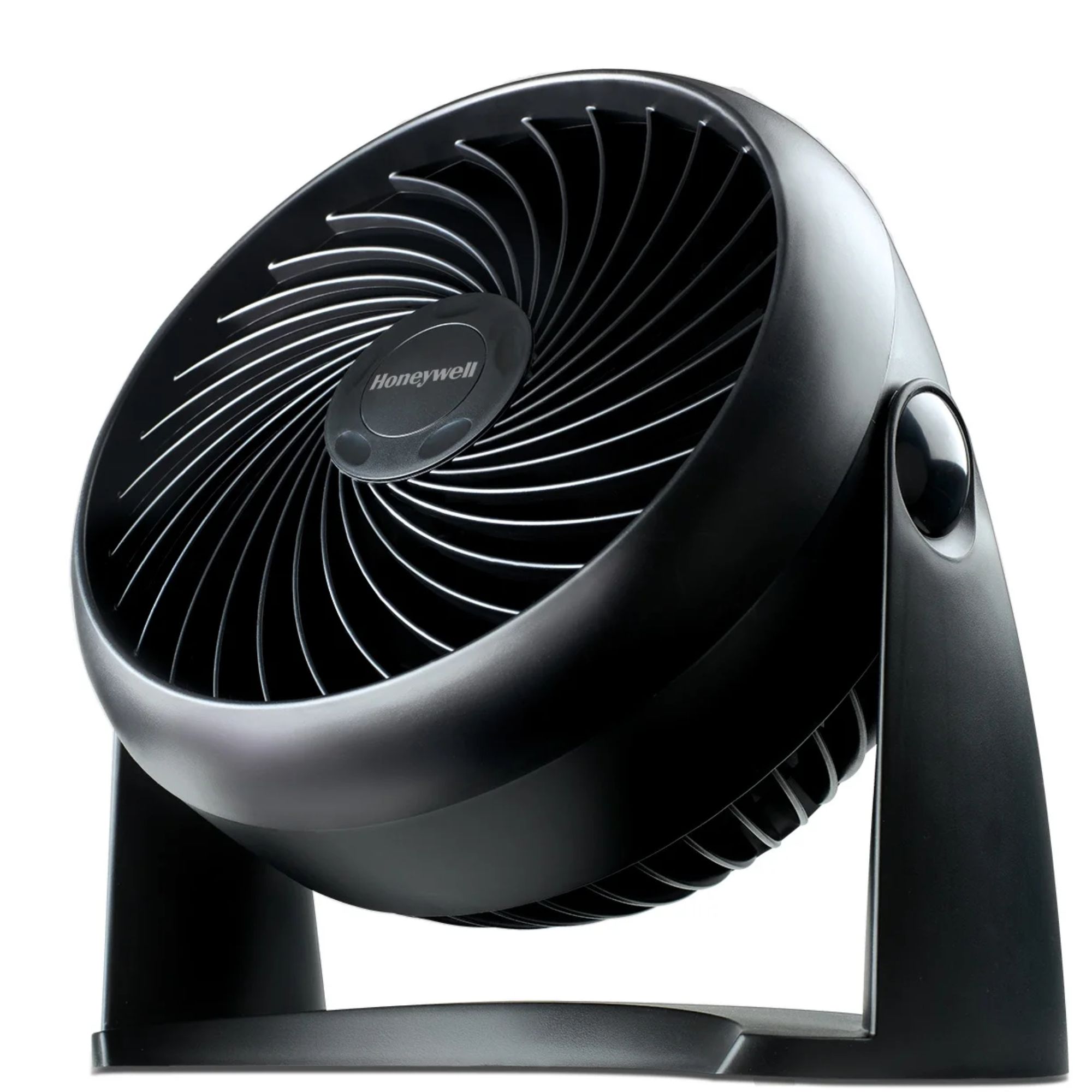Working at my desk left me in a sweat until I tried this $17 small-space, renter-friendly Amazon fan – hundreds of thousands of people love it
It is cool, cute, and cost-effective


My small home office gets especially warm during the hotter months, as heat rises up rapidly in my house. This used to leave me all in a fluster and made working even more stressful.
That was until I found the small but mighty Honeywell desk fan from Amazon, which has been bought over 30,000 times in the last month. It has over 100,000 five-star reviews from shoppers who adore it, so I just had to give it a try myself. I also asked air conditioning pros why using a small desk fan is a smart idea.
It has proven to me that the best fans don't necessarily have to be big in order to be powerful and effective.
Why I love the Honeywell desk fan
During hot, summer days, my small office turns into an oven by midday. This leaves me sweaty as I'm typing away at my keyboard. That all changed when I plugged in the Honeywell desk fan. I have been using it for about three hours at a time, five days a week, for three months now, and my working day has become a lot more chill. It is also my go-to for keeping cool during a heatwave.
Despite its small size, it's surprisingly sturdy and stays put as it circulates air. Even on the lowest setting, it immediately casts a breeze across the room. I tend to use this during the morning and later afternoon, turning it right up during the midday heat. It has just three settings, which makes it easy to switch seamlessly between them.
When it's up to full, it is a little loud, with a white noise-style hum. However, this isn't usually an issue for me, as I listen to podcasts and music when I'm working, so I just tune into those.
The fact that it tilts upwards means that I don't have to have it blowing right in my face to enjoy the moving air. This is one of the best ways to cool a room with a fan. Plus, this is especially great as I don't like to have my skin dehydrated – even though I work at home, I don't have the time to re-moisturize repeatedly.
Design expertise in your inbox – from inspiring decorating ideas and beautiful celebrity homes to practical gardening advice and shopping round-ups.
I only have a small desk space, so I tend to stash it away during colder spells. It's compact enough to fit neatly in my desk drawer – I haven't even had to make space for it in my office storage area.

The fan fits perfectly on top of my desk.
Pros of using the Honeywell desk fan

Use a fan near a window to improve air circulation.
If you want to keep your small space cool, the Honeywell version has lots of benefits, according to Lisa Purvins, HVAC expert and vice president at Pro-Tech Heating & Cooling.
- Power: The Honeywell HT-900 from Amazon is powerful for its size. It’s a turbo-style air circulator, meaning it moves air efficiently across a room, not just directly in front of it.
- Compactness: At 10.9 inches high, it is both compact and highly portable.
- Versatility: Because of its design, it can be placed on a desk, mounted on a wall, or even used on the floor, making it very versatile.
- Cost-effectiveness: Fans like this help reduce reliance on HVAC systems in smaller areas, which can ultimately help lower energy bills.
Cons of using the Honeywell desk fan

Keep your space clutter free to ensure optimal air flow while using your fan.
While I love the Honeywell fan, there are some disadvantages of using small fans like it that Lisa says are worth looking out for.
- Limitations by itself: Fans don’t actually cool the air – they move it. So if you’re in a poorly ventilated or overheated room, the fan will just circulate warm air unless paired with air conditioning or a cross-draft.
- Humidity: Another downside is that they don’t help with humidity, which is a major factor in comfort, especially in more humid climates like the Midwest or Southeast. If you struggle with humidity, buying a dehumidifier will come in useful (the Pro Breeze dehumidifier from Walmart is quiet and portable).
- Capacity: While they’re great for personal cooling, they’re not a replacement for whole-room or whole-home cooling.
How to use the Honeywell desk fan

White can contribute to cooling a room, as it reflects heat and light.
I'm all about making the most out of everything I have. These are my top tips for using the Honeywell desk fan:
- Keep the area around it clear: There's nothing more distracting than having papers fluttering around while trying to work.
- Pair it up with a bowl of ice cubes: On especially hot days, I put a bowl of ice cubes in front of the fan, which is a great hack for cooling the air around you without AC.
- Use near a window: Do this during cooler mornings or evenings to help bring in fresh air. You can even point a fan out of a window to blow hot air out.
- Try using it on the floor: If you are especially limited on desk space, it also provides a great breeze while placed on the floor.
- Keep it clean: I wipe it down with the Mr. Siga microfiber cloths (available from Walmart) and the Mrs. Meyers cleaning spray (available from Amazon), which are both brilliant cleaning supplies to avoid dust being blown in my face.
Who is the Honeywell desk fan good for?

Plants can benefit from fans, as promoting air flow can reduce fungal infections.
For those like me who are living in smaller spaces, desk fans like the Honeywell Turboforce are a smart, space-saving cooling option.
Scott Levene, HVAC specialist and vice president at Levco, says, ‘Desk fans are ideal for anyone spending long hours in a single spot, such as remote workers or students.
‘They're also great for people trying to reduce energy bills or rely less on central air during spring or fall when it’s not as hot.’
I also highly recommend them for renters who might not be able to upgrade their air conditioning but still want to be cooled down properly.
I tried the Honeywell desk fan

The Honeywell fan will work in offices both big and small.
I have been using the Honeywell TurboForce Fan for three months now, and I can’t imagine my home office without it. It’s compact and lightweight but still packs a surprisingly powerful airflow that cools down my space quickly.
The adjustable head is a standout feature for me. Being able to tilt the fan up or down allows me to direct the airflow exactly where I need it, whether it’s toward my desk while I’m working or angled upward to circulate air throughout the room.
I have tested high-tech fans in the past, which have been fun to use, but ultimately for my office, I wanted something I could operate even before my first coffee. The simple controls let me switch between subtle and strong airflow – the low setting is perfect for a subtle morning breeze, while the high speed works well during hot afternoons.
It is a little loud on the highest setting, but with a podcast on, I tune out of the white noise sound while I’m working. That being said, I can imagine the white noise would work well for bedroom soundscapes.
It’s also easy to maintain – I wipe down the grill and blades regularly to prevent dust gathering, in order to help it run efficiently and to prolong its lifespan. This simple upkeep is a big plus for anyone who wants a low-maintenance cooling solution.
Overall, I have to give the Honeywell TurboForce Fan a solid 8/10.
It is reliable, powerful, and user-friendly, and offers great value for its size and price. I recommend it to anyone in need of a practical and effective fan. The only reason it loses marks from me is that its cable could be slightly longer.
What to shop

Looking for a bigger fan? The SharkFlexBreeze is Homes & Gardens' number one fan, thanks to the fact it can be used indoors and outdoors, corded or cordless, and as a pedestal or tabletop fan. The battery can also last up to 24 hours.

For those with an especially small desk, this sleek fan will hardly take up any room. Like the Honeywell, it has three different speeds and button controls. It will also fit into gaps and drawers very neatly. This is powered by USB, so be sure to check that your laptop or outlet has this before purchasing.

If you are more worried about staying cool outside than inside, using a bug-repellent fan like this is a good idea. Not only will it keep you cool during picnics, but it repels weak-flying pests with its soft, flexible blades, and can even be taken on the go.
Meet the experts

Lisa is the vice president of Pro-Tech Heating & Cooling, which is a family-owned and operated heating and cooling company serving the Grand Rapids, MI, area. She has over 20 years of experience in the field and utilizes this to find innovative ways to cool the home.

Scott is the vice president at Levco, which is an oil and HVAC service company in Trumbull, CT. Scott has been working for the company for over 18 years, and has helped numerous clients find smart cooling solutions.
If you want to carry on cooling down your home this summer, learning the differences between fans vs air conditioners and the different air conditioning types will help you make the most out of both solutions.

Eve is a freelance lifestyle editor and writer with over five years of experience working for digital and print titles. Previously she was a content editor at Real Homes. She has a keen eye for sophisticated style and is able to spot design trends before they go viral. As well as this, she loves solving pain points around the home. Alongside writing for Homes and Gardens, she writes for House Beautiful, Apartment Therapy, and is the founding editor of The Notts Edit. When she’s not writing, you can find her decorating her rental with Scandi decor, tending to her houseplants, and growing vegetables in her garden.
